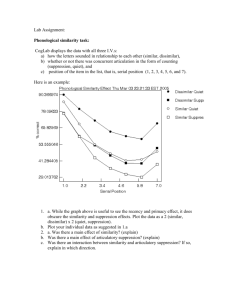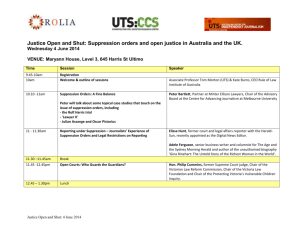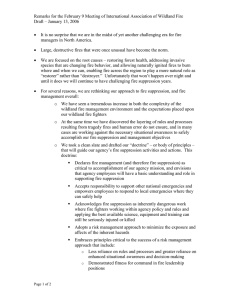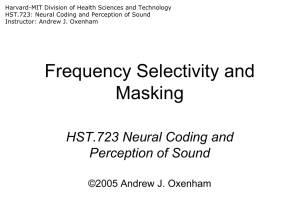Harvard-MIT Division of Health Sciences and Technology
advertisement
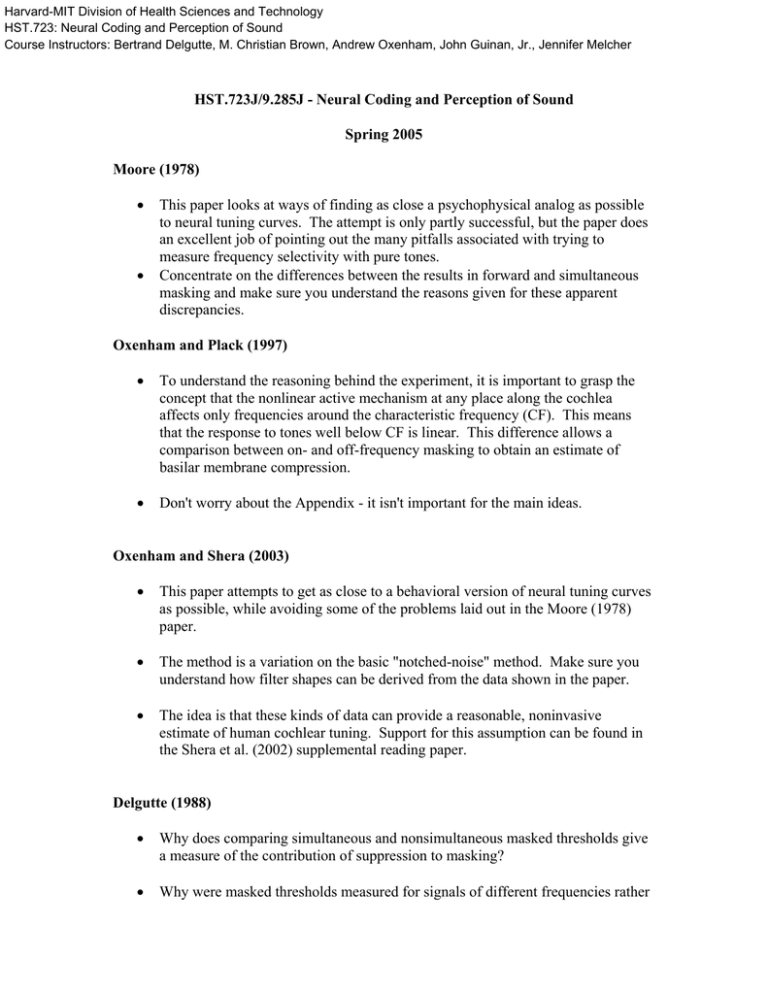
Harvard-MIT Division of Health Sciences and Technology HST.723: Neural Coding and Perception of Sound Course Instructors: Bertrand Delgutte, M. Christian Brown, Andrew Oxenham, John Guinan, Jr., Jennifer Melcher HST.723J/9.285J - Neural Coding and Perception of Sound Spring 2005 Moore (1978) • • This paper looks at ways of finding as close a psychophysical analog as possible to neural tuning curves. The attempt is only partly successful, but the paper does an excellent job of pointing out the many pitfalls associated with trying to measure frequency selectivity with pure tones. Concentrate on the differences between the results in forward and simultaneous masking and make sure you understand the reasons given for these apparent discrepancies. Oxenham and Plack (1997) • To understand the reasoning behind the experiment, it is important to grasp the concept that the nonlinear active mechanism at any place along the cochlea affects only frequencies around the characteristic frequency (CF). This means that the response to tones well below CF is linear. This difference allows a comparison between on- and off-frequency masking to obtain an estimate of basilar membrane compression. • Don't worry about the Appendix - it isn't important for the main ideas. Oxenham and Shera (2003) • This paper attempts to get as close to a behavioral version of neural tuning curves as possible, while avoiding some of the problems laid out in the Moore (1978) paper. • The method is a variation on the basic "notched-noise" method. Make sure you understand how filter shapes can be derived from the data shown in the paper. • The idea is that these kinds of data can provide a reasonable, noninvasive estimate of human cochlear tuning. Support for this assumption can be found in the Shera et al. (2002) supplemental reading paper. Delgutte (1988) • Why does comparing simultaneous and nonsimultaneous masked thresholds give a measure of the contribution of suppression to masking? • Why were masked thresholds measured for signals of different frequencies rather than just measuring the threshold at the CF? • Does this paper prove that suppression plays a role in psychophysical masking of tones by tones? Ruggero et al. (1992) • The most important thing to note is the different suppression properties (e.g. suppression threshold and the growth rate of suppression) produced by suppressors at frequencies above and below CF. • Pay attention to suppression as a function of time (i.e. phase) within a cycle of a low-frequency suppressor (Figs. 7-9) but don't spend much time on the effects of suppression on the phase of the test tone response (Fig. 13). • Ignore Fig. 2A and the methodological details of using the Mössbauer technique with two tones. Cai and Geisler (1996) • It is important to understand the model (Figs. 1, 2 and 13) and how it produces results like those observed for low-side suppression. Not so important are Sections 3.2 on "Tone-pip responses" (Figs. 9-11), and Section 3.3 on "Suppression of the responses to a low-frequency tone by a CF tone" (Fig 12). • What parts of the model are biophysically based and what parts are ad hoc? • This model is meant to explain low-side suppression. Consider whether a similar model could account for high-side suppression. What would have to be added or changed to make such a model work for high-side suppression?
